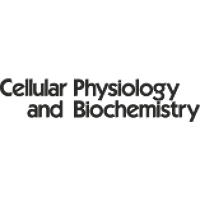 “Cannabidiol (CBD) oils are low tetrahydrocannabinol products derived from Cannabis sativa that have become very popular over the past few years. Patients report relief for a variety of conditions, particularly pain, without the intoxicating adverse effects of medical marijuana.
“Cannabidiol (CBD) oils are low tetrahydrocannabinol products derived from Cannabis sativa that have become very popular over the past few years. Patients report relief for a variety of conditions, particularly pain, without the intoxicating adverse effects of medical marijuana.
In June 2018, the first CBD-based drug, Epidiolex, was approved by the US Food and Drug Administration for treatment of rare, severe epilepsy, further putting the spotlight on CBD and hemp oils.
There is a growing body of preclinical and clinical evidence to support use of CBD oils for many conditions, suggesting its potential role as another option for treating challenging chronic pain or opioid addiction.
Care must be taken when directing patients toward CBD products because there is little regulation, and studies have found inaccurate labeling of CBD and tetrahydrocannabinol quantities.
This article provides an overview of the scientific work on cannabinoids, CBD, and hemp oil and the distinction between marijuana, hemp, and the different components of CBD and hemp oil products.
We summarize the current legal status of CBD and hemp oils in the United States and provide a guide to identifying higher-quality products so that clinicians can advise their patients on the safest and most evidence-based formulations.
This review is based on a PubMed search using the terms CBD, cannabidiol, hemp oil, and medical marijuana. Articles were screened for relevance, and those with the most up-to-date information were selected for inclusion.”
https://www.ncbi.nlm.nih.gov/pubmed/31447137
https://www.mayoclinicproceedings.org/article/S0025-6196(19)30007-2/fulltext

 “Phytocannabinoids are unique terpenophenolic compounds predominantly produced in the glandular trichomes of the cannabis plant (Cannabis sativa L.). The delta-9- tetrahydrocannabinol (THC) is the main active constituent responsible for the plant’s psychoactive effect and, together with the non- psychoactive cannabidiol (CBD), the most investigated naturally occurring cannabinoid.
“Phytocannabinoids are unique terpenophenolic compounds predominantly produced in the glandular trichomes of the cannabis plant (Cannabis sativa L.). The delta-9- tetrahydrocannabinol (THC) is the main active constituent responsible for the plant’s psychoactive effect and, together with the non- psychoactive cannabidiol (CBD), the most investigated naturally occurring cannabinoid. “Accumulating evidence points towards the antipsychotic potential of
“Accumulating evidence points towards the antipsychotic potential of  “Parkinson’s disease (PD) is a neurodegenerative disease and its characteristic is the progressive degeneration of dopaminergic neurons within the substantia nigra (SN) of the midbrain. There is hardly any clinically proven efficient therapeutics for its cure in several recent preclinical advances proposed to treat PD.
“Parkinson’s disease (PD) is a neurodegenerative disease and its characteristic is the progressive degeneration of dopaminergic neurons within the substantia nigra (SN) of the midbrain. There is hardly any clinically proven efficient therapeutics for its cure in several recent preclinical advances proposed to treat PD. “C57BL/6J mice infected with Theiler’s murine encephalomyelitis virus (TMEV) develop acute behavioral seizures in the first week of infection and later develop chronic epilepsy. The TMEV model provides a useful platform to test novel antiseizure therapeutics.
“C57BL/6J mice infected with Theiler’s murine encephalomyelitis virus (TMEV) develop acute behavioral seizures in the first week of infection and later develop chronic epilepsy. The TMEV model provides a useful platform to test novel antiseizure therapeutics. “Among the assisted reproductive techniques, the in vitro maturation of oocytes (IVM) is less developed than other techniques, but its implementation would entail a qualitative advance.
“Among the assisted reproductive techniques, the in vitro maturation of oocytes (IVM) is less developed than other techniques, but its implementation would entail a qualitative advance. “Cannabidiol (CBD) containing products are available in a plethora of flavors including oral, sublingual, and inhalable forms. Immunotoxicological effects of CBD containing liquids were assessed by hypothesizing that CBD regulates oxidative stress and lipopolysaccharide (LPS) induced inflammatory responses in macrophages, epithelial cells, and fibroblasts.
“Cannabidiol (CBD) containing products are available in a plethora of flavors including oral, sublingual, and inhalable forms. Immunotoxicological effects of CBD containing liquids were assessed by hypothesizing that CBD regulates oxidative stress and lipopolysaccharide (LPS) induced inflammatory responses in macrophages, epithelial cells, and fibroblasts. “Cocaine abuse continues to be a serious health problem worldwide. Despite intense research there is currently no FDA-approved medication to treat cocaine use disorder. The recent search has been focused on agents targeting primarily the dopamine system, while limited success has been achieved at the clinical level.
“Cocaine abuse continues to be a serious health problem worldwide. Despite intense research there is currently no FDA-approved medication to treat cocaine use disorder. The recent search has been focused on agents targeting primarily the dopamine system, while limited success has been achieved at the clinical level. “Δ9-Tetrahydrocannabinol (THC, a CB1 receptor agonist) and Cannabidiol (CBD, a non-competitive antagonist of endogenous CB1 and CB2 ligands) are two primary components of Cannabis species, and may modulate fear learning in mammals.
“Δ9-Tetrahydrocannabinol (THC, a CB1 receptor agonist) and Cannabidiol (CBD, a non-competitive antagonist of endogenous CB1 and CB2 ligands) are two primary components of Cannabis species, and may modulate fear learning in mammals. “Cannabis was extensively utilized for its medicinal properties till the 19th century. A steep decline in its medicinal usage was observed later due to its emergence as an illegal recreational drug.
“Cannabis was extensively utilized for its medicinal properties till the 19th century. A steep decline in its medicinal usage was observed later due to its emergence as an illegal recreational drug.